How Mobile Time and Labor Helps Managers
Let’s discuss benefits to managers in detail. Frontline managers have considerable influence because of their broad range of responsibilities. Above all, managers need to know what’s going on with their teams. This is more difficult when employees aren’t in one physical location. With a mobile time and labor solution, supervisors can see at a glance who is on duty and where they are located.
Centralize Communication with Mobile Access
Communication and mobile productivity go hand in hand. Managers and employees communicate about schedules, timecards, time off, and shift swapping bidirectionally through the system. When everyone can see changes in real time, it ends the back-and-forth texting so common in small businesses.
Scheduling is one of a manager’s critical tasks and can take up a lot of time. Though spreadsheet scheduling is a step up from pen and paper, it is slow and tedious, and it doesn’t allow managers to respond to changes. A mobile time and labor solution allows managers to build schedules quickly and staff shifts with a 360-degree perspective. A virtual trade board allows employees and managers to work together to keep shifts staffed. This keeps both managers and employees happy. With the board, employees can swap shifts–subject to manager approval, if needed. Managers can choose their level of oversight, but the system handles the heavy lifting.
Simplify Approvals for Managers on the go
Let’s discuss another ongoing managerial responsibility–approvals. Managers must approve timecards, PTO requests and, as mentioned previously, shift changes. If your organization is still doing approvals manually, you have a great opportunity to increase efficiency. It’s time to put modern mobile tech to work for your business!
Let’s discuss timecards, for example. A mobile solution creates timecards as employees punch in and out. The system tallies the hours for each shift and pay period as well as overtime and PTO accruals. The software doesn’t make arithmetic mistakes, so the manager doesn’t need to double check. They also don’t need to decipher sloppy writing or investigate missed punches.
Good PTO management is essential for employee retention and a positive corporate culture. A mobile system helps you administer PTO so employees can take time off without impacting business operations. Employees request time off in the system and managers can see all requests in a centralized location. Importantly, managers can see PTO when building schedules. This ensures adequate shift coverage when employees are on leave. Simplified approvals are a compelling reason to use a mobile solution.
Alerts and Threshold Warnings
Alerts and threshold warnings are additional features that make a manager’s job a lot easier. In effect, they allow a manager to outsource their memory, schedule policing and compliance tracking. Managers can set alerts for no-shows, impending overtime, employee double-booking, missed punches and early punch-in for mandated breaks. When a mobile system automates timekeeping, scheduling and PTO, managers have more time to help their teams be productive and engaged.
THIS ARTICLE IS FOR GENERAL INFORMATION PURPOSES ONLY. BUSINESS FINANCIALS, INC. (BFI) IS NOT ISSUING SPECIFIC FINANCIAL OR TAX ADVICE. PLEASE CONSULT WITH A LICENSED FINANCIAL PLANNER, TAX ATTORNEY, OR ACCOUNTANT FOR ASSISTANCE WITH YOUR SPECIFIC SITUATION. IF YOU NEED HELP, WE INVITE YOU TO CONTACT US. WE WILL BE HAPPY TO MAKE RECOMMENDATIONS OR REFER YOU TO A LICENSED PROVIDER WHO MAY BE BEST SUITED FOR YOUR SITUATION.





